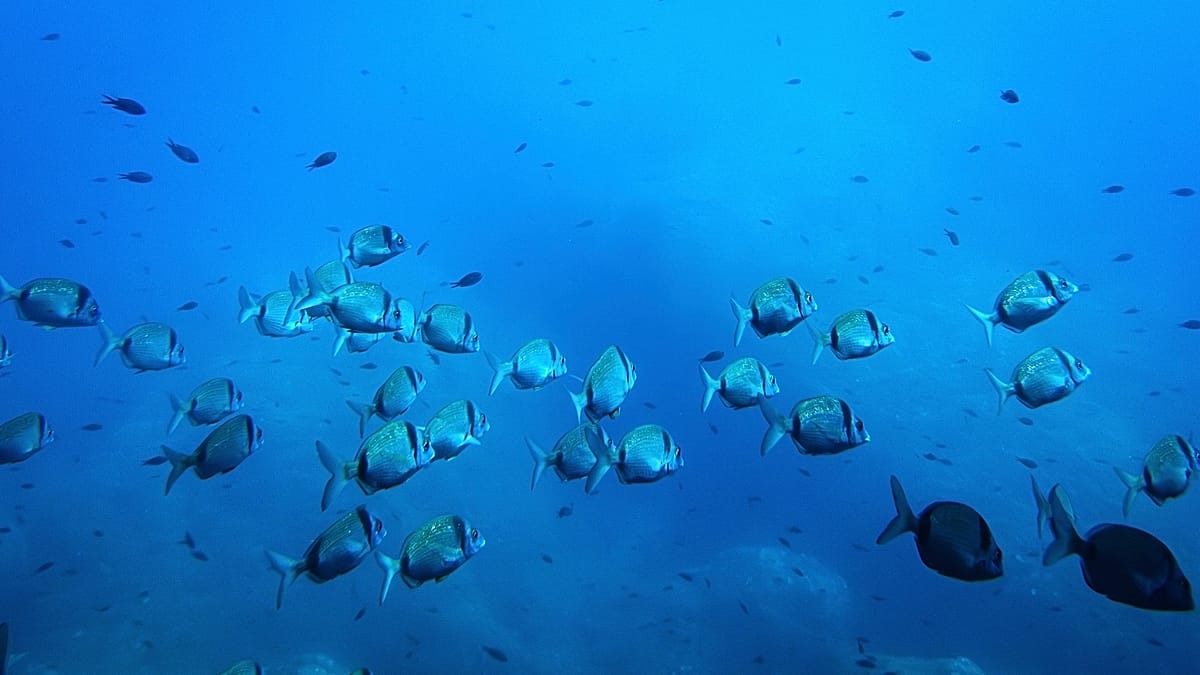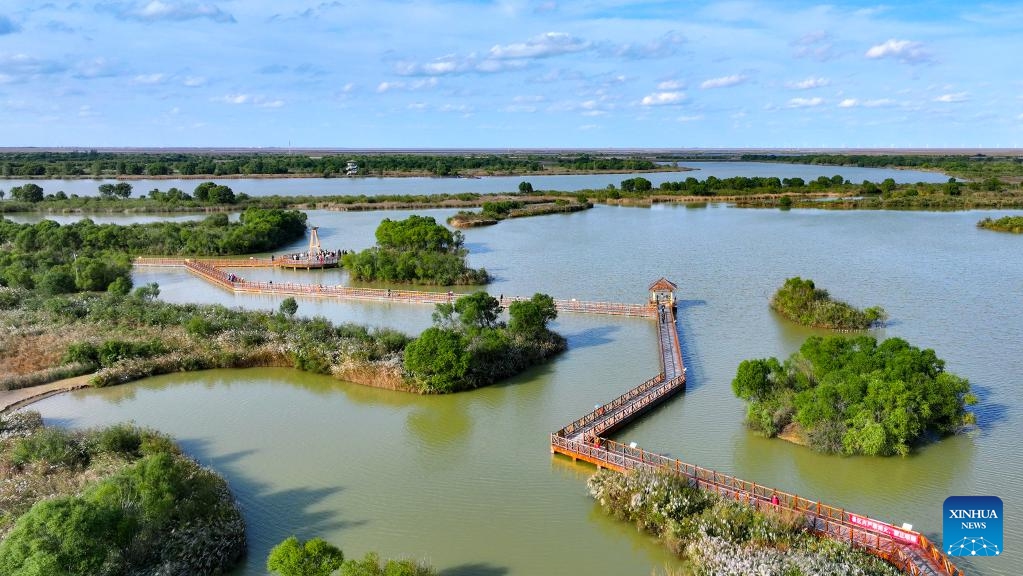Ocean mining may harm tiny species at heart of marine food webs – Euronews.com

Report on Deep-Sea Mining Impacts and Sustainable Development Goals
Introduction: Mineral Demand and SDG Conflicts
A recent study highlights a significant conflict between the pursuit of critical minerals for the green energy transition and the preservation of marine ecosystems, directly impacting several Sustainable Development Goals (SDGs). The increasing demand for minerals like copper and zinc, essential for technologies aligned with SDG 7 (Affordable and Clean Energy), is driving interest in deep-sea mining. However, research indicates that this practice poses a severe threat to marine biodiversity and ecosystem functions, challenging the objectives of SDG 14 (Life Below Water).
Ecological Disruption and Threats to SDG 14: Life Below Water
A study published in Nature Communications by University of Hawaii researchers reveals the potential consequences of deep-sea mining on mid-water ecosystems, often referred to as the “twilight zone.” The primary concern is the discharge of waste plumes containing sediment and dirt from the seafloor.
- Food Web Contamination: The discharged waste particles are similar in size to the natural food sources of zooplankton. Ingestion of this non-nutritious “junk food” by these foundational organisms disrupts the marine food web.
- Impact on Marine Life: The study estimates that over half of the ocean’s zooplankton could be affected. This, in turn, impacts approximately 60 percent of the micronekton (small organisms like shrimp and fish) that feed on them.
- Ecosystem Collapse: Experts warn that this disruption could lead to a collapse of the mid-water food web, with grave repercussions such as species illness, displacement, and potential extinctions, fundamentally undermining the targets of SDG 14 to sustainably manage and protect marine and coastal ecosystems.
Implications for SDG 2: Zero Hunger
The degradation of the marine food web has direct implications for global food security, a core component of SDG 2 (Zero Hunger). The health of deep-water ecosystems is intrinsically linked to the viability of commercial fisheries.
- Impact on Commercial Fisheries: Commercially significant fish species, including tuna and mahi-mahi, feed on the smaller organisms that inhabit these deeper waters.
- Threat to Food Sources: A collapse in the lower levels of the food chain would reduce the food available for these larger fish, potentially impacting fish stocks and the communities that depend on them for sustenance and economic stability.
Climate and Governance Considerations
SDG 13: Climate Action
Beyond direct impacts on marine life, deep-sea mining activities raise concerns related to SDG 13 (Climate Action). Environmental groups note that disturbing the seabed could release significant amounts of carbon dioxide that is currently sequestered in deep-ocean sediments, potentially exacerbating climate change.
Governance and Policy
The International Seabed Authority is currently managing exploration contracts, and various nations are pursuing deep-sea mining to secure mineral supply chains. This push for resource extraction highlights the urgent need for a regulatory framework that aligns with global sustainability commitments and prevents irreversible harm to marine environments.
Pathways to SDG 12: Responsible Consumption and Production
The study suggests that destructive deep-sea mining may not be necessary. Achieving a sustainable future requires prioritizing alternative resource strategies that align with SDG 12 (Responsible Consumption and Production). Researchers and environmental experts advocate for a circular economy approach, including:
- Enhanced recycling of batteries and electronics to recover critical minerals.
- Development of technologies to sift through and reprocess existing mining waste and tailings on land.
These alternatives offer a path to meet mineral demands without compromising the health of the ocean, which is vital for regulating the climate and supporting life on Earth.
Analysis of Sustainable Development Goals in the Article
1. Which SDGs are addressed or connected to the issues highlighted in the article?
- SDG 14: Life Below Water
- SDG 2: Zero Hunger
- SDG 12: Responsible Consumption and Production
- SDG 13: Climate Action
2. What specific targets under those SDGs can be identified based on the article’s content?
-
SDG 14: Life Below Water
- Target 14.1: By 2025, prevent and significantly reduce marine pollution of all kinds. The article directly addresses this by describing how deep-sea mining releases a “murky plume of particles” and “waste” back into the ocean, which constitutes marine pollution.
- Target 14.2: By 2020, sustainably manage and protect marine and coastal ecosystems to avoid significant adverse impacts. The study highlights the potential for the marine food web to collapse due to mining waste, which is a significant adverse impact on the deep-sea ecosystem. The article notes that this could lead to “species illness, species movement, species death” and even “species extinctions.”
- Target 14.4: By 2020, effectively regulate harvesting and end overfishing, illegal, unreported and unregulated fishing and destructive fishing practices. The article connects the health of the deep-sea food web directly to “commercially important fish such as mahi mahi or tuna,” implying that the destruction of their food source is a destructive practice that impacts fisheries.
-
SDG 2: Zero Hunger
- Target 2.4: By 2030, ensure sustainable food production systems. The article warns that the disruption of the marine food web could “ultimately affect fisheries and the food we find on our plates.” This directly links the environmental impact of mining to the sustainability of a major global food source.
-
SDG 12: Responsible Consumption and Production
- Target 12.2: By 2030, achieve the sustainable management and efficient use of natural resources. The article discusses the pursuit of deep-sea mining for critical minerals while also pointing out that “digging up the deep sea might not be necessary.” It suggests “alternative sources of metals, including recycling batteries and electronics, or sifting through mining waste and tailings,” which are key components of sustainable resource management.
-
SDG 13: Climate Action
- Target 13.3: Improve education, awareness-raising and human and institutional capacity on climate change mitigation. The article mentions that environmental groups cite the “disturbance of planet-warming carbon dioxide that is currently sequestered in the ocean and on its floor” as a negative impact of deep-sea mining. This raises awareness about a potential driver of climate change.
3. Are there any indicators mentioned or implied in the article that can be used to measure progress towards the identified targets?
-
For Target 14.1 (Reduce Marine Pollution)
- Implied Indicator: The concentration and spread of sediment plumes from deep-sea mining operations. The article describes the “murky plume of particles” created when excess seawater, dirt, and sediment are released, which could be measured to assess pollution levels.
-
For Target 14.2 (Protect Marine Ecosystems)
- Implied Indicator: The health and population density of zooplankton and micronekton in the “twilight zone.” The study’s focus on these organisms eating “junk food” (waste particles) implies that their health and population numbers are a direct measure of ecosystem impact.
-
For Target 14.4 (Sustainable Fishing)
- Implied Indicator: The stock levels of commercially important fish (e.g., mahi-mahi, tuna) in regions affected by deep-sea mining. The article suggests that a collapse in the lower food web would impact these surface fish, making their population a relevant indicator.
-
For Target 2.4 (Sustainable Food Production)
- Implied Indicator: The yield and stability of commercial fisheries that depend on the affected deep-sea food web. The article’s warning about affecting “the food we find on our plates” points to fishery output as a key measure.
-
For Target 12.2 (Sustainable Resource Management)
- Implied Indicator: The rate of recycling for critical minerals from sources like batteries and electronics. The article proposes this as an alternative to mining, so an increase in recycling rates would indicate progress towards more sustainable resource use.
-
For Target 13.3 (Climate Change Awareness)
- Implied Indicator: The amount of sequestered carbon dioxide released from the seabed due to mining activities. The article mentions the disturbance of sequestered carbon as a concern, which could be quantified to measure the climate impact.
4. Table of SDGs, Targets, and Indicators
| SDGs | Targets | Indicators (Implied from the article) |
|---|---|---|
| SDG 14: Life Below Water |
14.1: Prevent and significantly reduce marine pollution.
14.2: Sustainably manage and protect marine ecosystems to avoid significant adverse impacts. 14.4: Effectively regulate harvesting and end destructive fishing practices. |
Concentration and spread of sediment plumes from mining operations.
Health and population density of zooplankton and micronekton in affected ocean zones. Stock levels of commercially important fish (tuna, mahi-mahi) in regions adjacent to mining. |
| SDG 2: Zero Hunger | 2.4: Ensure sustainable food production systems. | Yield and stability of commercial fisheries dependent on the affected marine food web. |
| SDG 12: Responsible Consumption and Production | 12.2: Achieve the sustainable management and efficient use of natural resources. | Rate of recycling for critical minerals from alternative sources like batteries and electronics. |
| SDG 13: Climate Action | 13.3: Improve education and awareness-raising on climate change mitigation. | Amount of sequestered carbon dioxide released from the ocean floor due to mining activities. |
Source: euronews.com
What is Your Reaction?
 Like
0
Like
0
 Dislike
0
Dislike
0
 Love
0
Love
0
 Funny
0
Funny
0
 Angry
0
Angry
0
 Sad
0
Sad
0
 Wow
0
Wow
0
















































/environment-climate-change-and-health-(ech)/water-sanitation-hygiene-and-health-(wsh)/landfill-tuvalu-36092.tmb-1200v.jpg?sfvrsn=5c21fe40_1#)

.jpg.webp?itok=0ZsAnae9#)

























